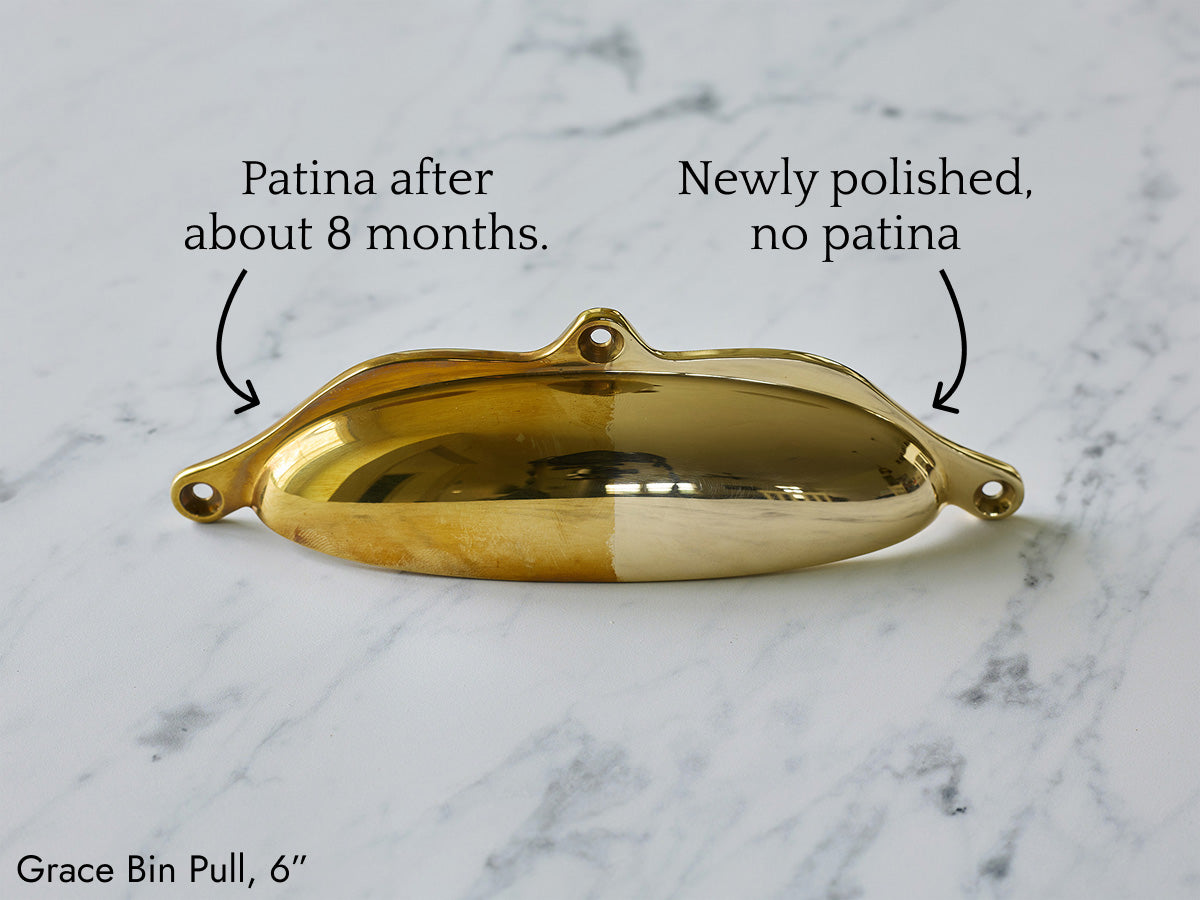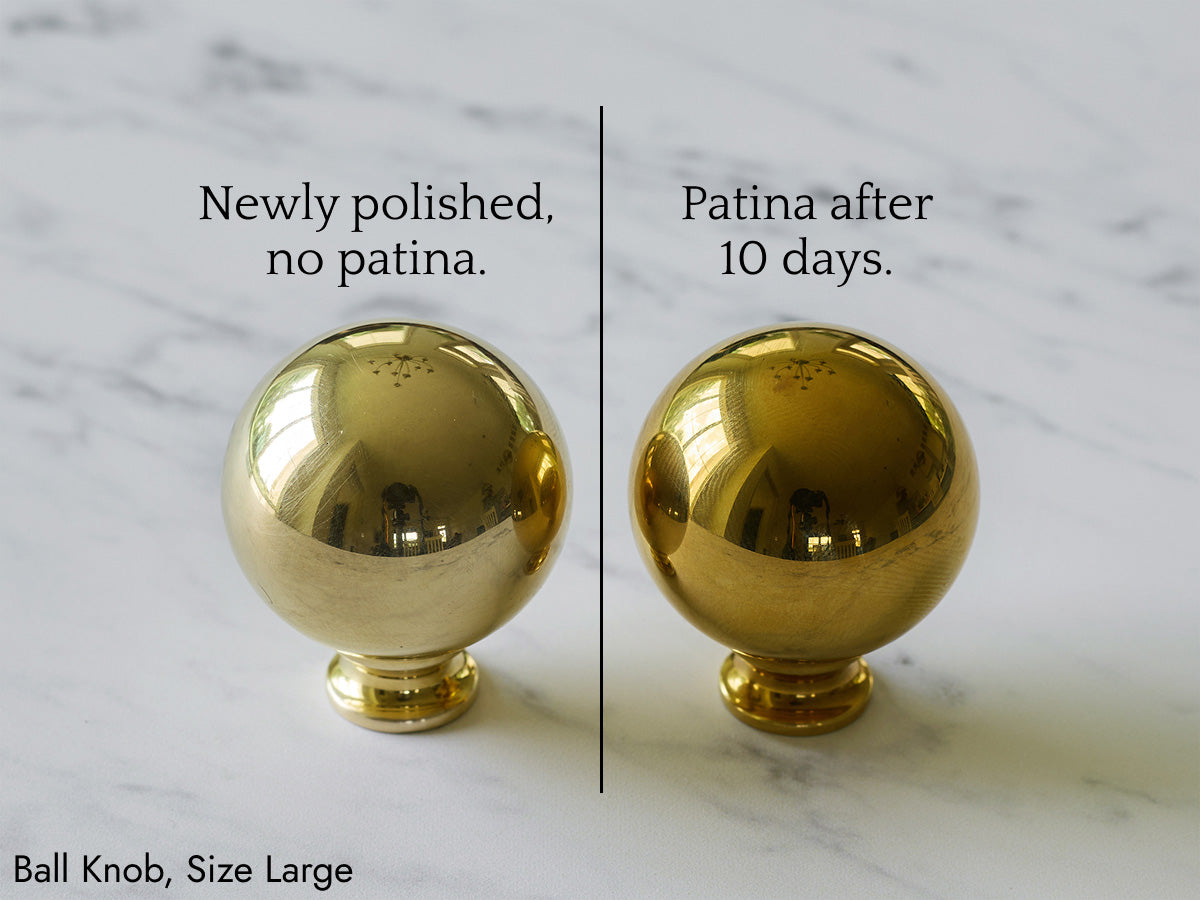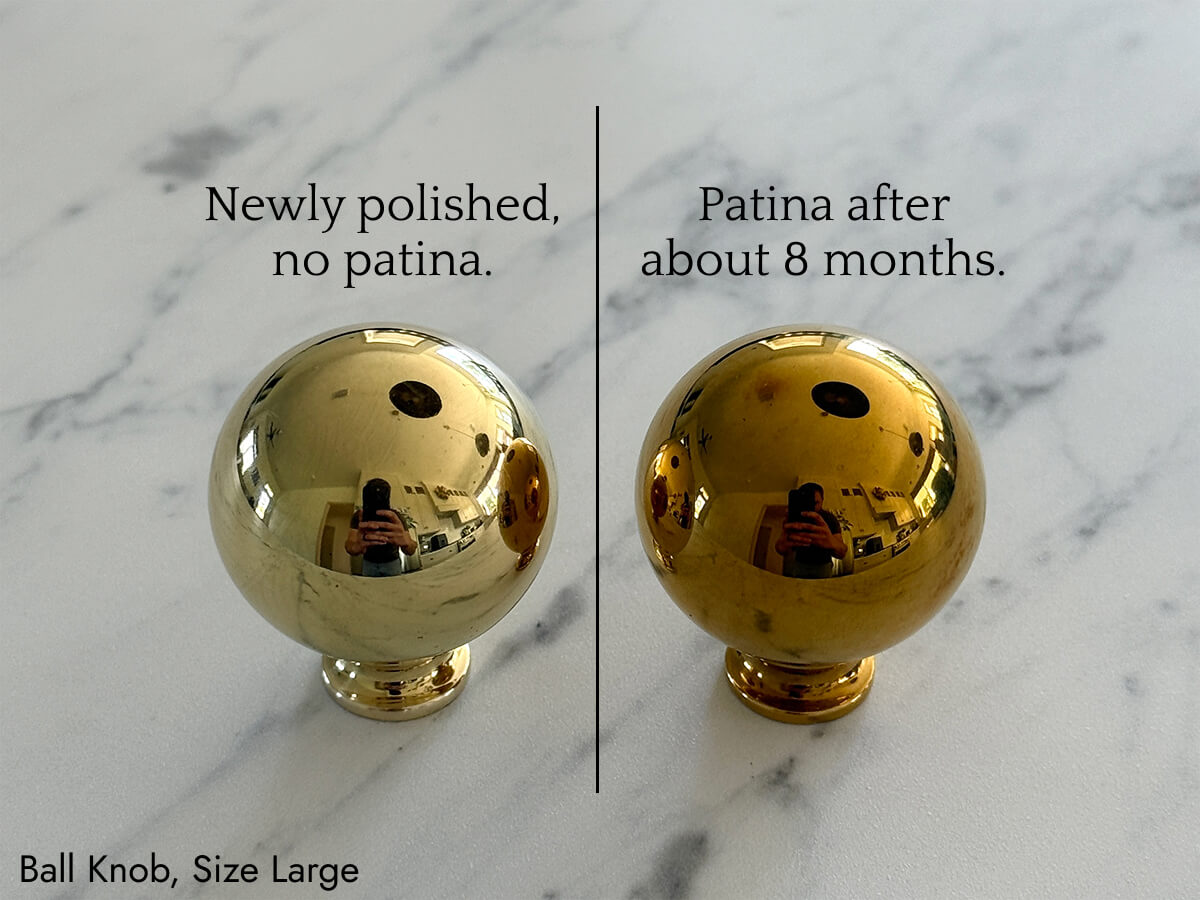Understanding Unlacquered Brass Patina

Patina: What to Expect
The patina that naturally develops on unlacquered brass is one of its most sought-after characteristics, for a traditional and charming aged look. Unlike lacquered brass, which stays static, unlacquered brass is meant to evolve.
Unlacquered polished brass with no patina has a very soft golden-yellow hue. In certain lighting, it can even appear silvery—resembling polished nickel. However, it does not take long for the patina to visibly develop.
As shown below, the knob has developed a visibly noticeable patina after just 10 days of normal use.

As the hardware is handled and exposed to air, moisture, and the natural oils from your hands, a patina will begin to form—a hallmark of authentic brass.
The brass will gradually darken, taking on deeper golden, bronze, or coppery tones. Each piece develops its own character, resulting in a rich, lived-in look that many designers and homeowners find timeless and elegant.

Small variations from piece to piece are expected and will soften over time, often evening out in tone with continued use.
If preferred, the original shine of unlacquered polished brass can be restored using a brass polish, though this will remove the patina and restart the aging process.
Do NOT use brass polish on unlacquered aged brass—it can damage the aged finish.
Use mild soap with water and a soft microfiber cloth to clean without removing the patina.
